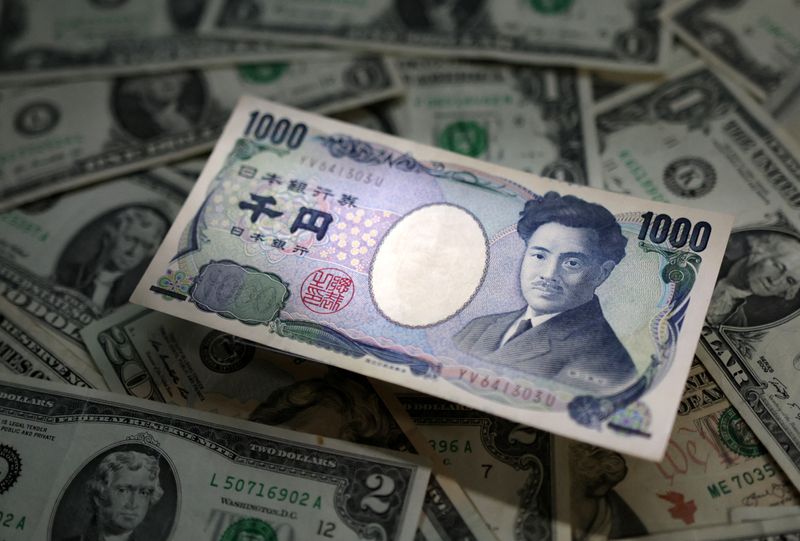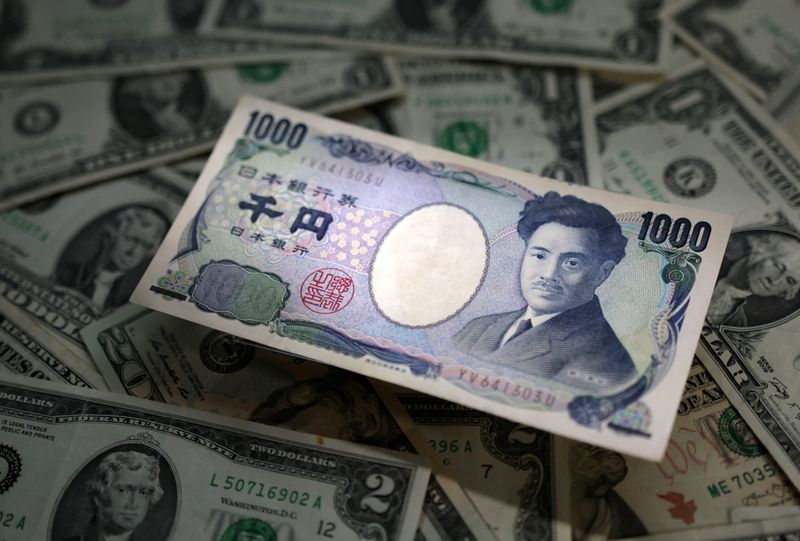Forex
Yen jumps as BOJ hikes rates, dollar dips before Fed

By Karen Brettell
NEW YORK (Reuters) – The Japanese yen hit a four-month high against the dollar on Wednesday after the Bank of Japan raised rates to the highest since 2008 and indicated that more hikes may follow, while the dollar was broadly weaker before the Federal Reserve’s meeting statement.
The BOJ raised the overnight call rate target to 0.25% from 0-0.1%, the largest increase since 2007.
“A lot of market participants were preparing for this as if it was a possibility, but very few actually expected the BOJ to raise more than 10 basis points,” said Helen Given, FX trader at Monex USA in Washington.
“This upside surprise is giving yen a huge boost, especially because people think that the Fed might start telegraphing this afternoon for a cut in September,” Given said.
Japan’s rate increase came just months after the BOJ ended eight years of negative interest rates as the bank’s chief seeks to dismantle his predecessor’s unorthodox policies.
The Japanese central bank also announced plans to halve its monthly Japanese government bond (JGB) purchases to 3 trillion yen as of January-March 2026.
The yen has rallied since hitting a 38-year low of 161.96 against the greenback on July 3, in large part boosted by interventions by Japanese authorities. Traders unwinding short bets on the yen has added to the move.
Japanese authorities spent 5.53 trillion yen ($36.8 billion) intervening in the foreign exchange market this month to boost the currency, official data showed on Wednesday.
The dollar was last down 1.68% at 150.2 yen and got as low as 149.79, the lowest since March 19. It is on track to post a monthly loss of 6.7% against the Japanese currency, the largest since November 2022.
The Fed is expected to keep interest rates unchanged at the conclusion of its two-day meeting later on Wednesday. Analysts and traders will be looking for new hints that cuts are likely to begin in September as inflation eases and the labor market softens.
The dollar fell 0.46% to 103.9 against a basket of currencies and is on track for a monthly loss of 1.3%.
Traders are fully pricing in a September rate cut and a second and possible third cut by year-end.
The next major U.S. economic release that is likely to drive Fed policy will be Friday’s government jobs report for July. It is expected to show that employers added 175,000 jobs during the month, according to the median estimate of economists polled by Reuters.
The ADP National Employment Report on Wednesday showed that private payrolls rose by 122,000 jobs this month, below economists’ expectations for 150,000 in jobs gains.
The Australian dollar fell to a three-month low of $0.6480 and was last down 0.12% at $0.6529. following a softer reading on core inflation.
Markets abandoned bets of a further rate hike from the Reserve Bank of Australia after the data.
The euro gained 0.28% to $1.0845 and is set for a roughly 1% gain in July.
Euro zone inflation unexpectedly edged up in July, data showed on Wednesday, although a widely watched gauge of price growth in the services sector eased.
The pound was up 0.12% at $1.285 and is heading for a monthly gain of 1.6%.

Sterling options volatility rose to its highest in almost a year, reflecting the degree of nervousness ahead of Thursday’s Bank of England rate decision where markets are pricing in 65% odds of a rate cut.
In cryptocurrencies, bitcoin rose 0.41% to $66,443.

 Forex3 years ago
Forex3 years agoForex Today: the dollar is gaining strength amid gloomy sentiment at the start of the Fed’s week

 Forex3 years ago
Forex3 years agoUnbiased review of Pocket Option broker

 Forex3 years ago
Forex3 years agoDollar to pound sterling exchange rate today: Pound plummeted to its lowest since 1985

 Forex3 years ago
Forex3 years agoHow is the Australian dollar doing today?

 Cryptocurrency3 years ago
Cryptocurrency3 years agoWhat happened in the crypto market – current events today

 World3 years ago
World3 years agoWhy are modern video games an art form?

 Commodities3 years ago
Commodities3 years agoCopper continues to fall in price on expectations of lower demand in China

 Economy3 years ago
Economy3 years agoCrude oil tankers double in price due to EU anti-Russian sanctions






























